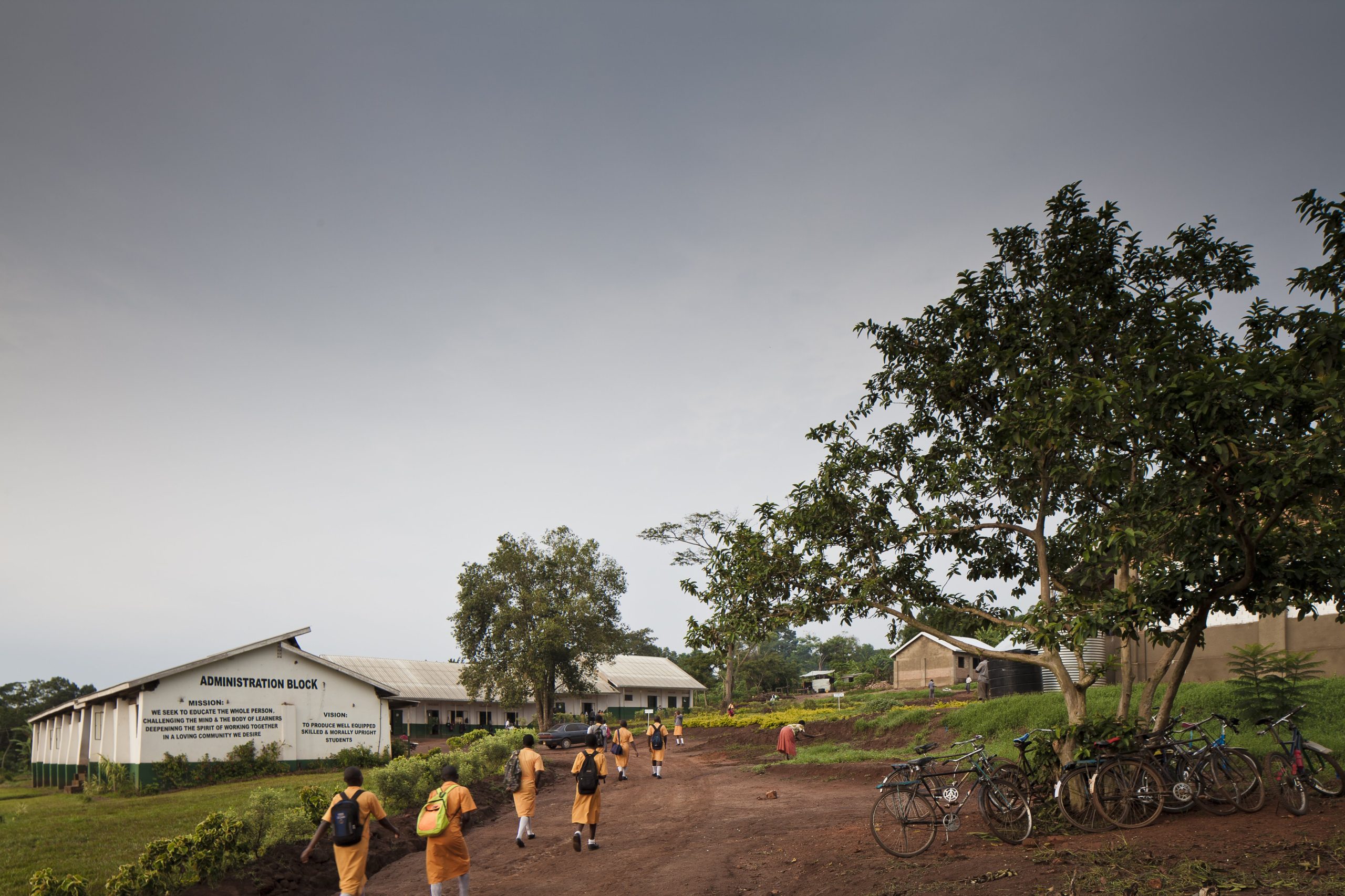By 2075, over half the world’s youth will be African. This remarkable projection isn’t just a statistic; it’s a call to the global philanthropic community. Africa’s rapidly expanding youth population is its greatest asset. Or perhaps its greatest liability. Time is running out for governments, philanthropists, and development partners to realize that asset by expanding access to high-quality, relevant secondary education across the continent.
As the global population surpasses 8 billion, fertility rates are plummeting in countries across the world – from Iran to Ireland, Poland to Brazil. But Africa tells a different story. Here, birth rates remain high and rising. Across Africa, the median age is below 20, half that of Europe, North America and much of East Asia. By 2030, Africans are expected to constitute 42 percent of global youth, and by 2050, one in five of all workers will be African. These figures paint a picture of Africa’s future, but the question remains: Will this workforce be ready to deliver what Africa – and the world – needs?
One hundred million young Africans will enter the labour market in the next decade. This presents a time-bound opportunity for social and economic transformation – but only if this adolescent population is educated and skilled for the future. Without the chance to build knowledge and skills to thrive in society, we will squander the opportunity of this demographic dividend and instead risk greater poverty, unemployment and instability.
We often marvel at the brain of a young child, with its remarkable capacity to absorb information and adapt to its surroundings. But research increasingly shows that adolescence is another critical period for cognitive development. Between the ages of 12 and 15, the brain is exceptionally malleable and responsive to thought, emotion and movement. This ‘plasticity’ is a marker of adolescence, making it the prime time to build skills, resilience and relationships. It’s also when young people are most vulnerable to external influences – both positive and negative.
For African adolescents, the external influences are profound. They are coming of age at a pivotal moment; where the growth of digital technology, urbanisation, forced migration, and climate change threaten to make or break societies. Whether they can confront the challenges and seize the opportunities ahead depends on their ability to access high-quality, relevant secondary education today.
Now, more than ever, high schools need to deliver to ensure young people can succeed in this future. Access to primary education is nearly universal across the continent, and growing numbers of students are moving on to high school. High school enrolment across Africa is set to double by 2030. This means 46 million more students in high school over the next 10 years.

PEAS student(s) walking to Onwards and Upwards Secondary School, Uganda. Photo courtesy of the authors.
For this growing population of adolescents, secondary education is likely to be their last formal stage of education before they enter the labour market, start a family, and participate in democracy. Does the current education system prepare adolescents for these next steps?
Imagine, for a moment, a teenage girl named Jendoyse who lives in rural Uganda. The statistics say she’s not in school, and if she is, she isn’t learning. But imagine if that could change. What if poverty didn’t stop her from getting an education because it’s free at the point of use? What if her voice and opinions are listened to by leaders who can make the right choices for her and her peers? What if her school connects her to critical services where she could access health, financial and livelihood support? And what if her teachers support her to master the skills that will set her up for success? In this reimagined high school, she would have the confidence she needs to choose her future and be excited, not fearful, about her next steps.

PEAS student speaking at a public speaking competition at PEAS’ Onwards and Upwards Secondary School, Uganda
Today, this vision is far from reality. High schools are neither relevant nor in reach for millions of African adolescents. Significant progress has been made to increase access to high schools across Sub-Saharan Africa. Gross enrolment rates increased from 29 percent in 1998 to 51 percent in 2018 in junior high, and from 20 percent to 34 percent in senior high. In the last five years, governments across South Sudan, Ghana, Madagascar, Malawi, Sierra Leone, Togo and Zambia have moved to offer fee-free lower secondary, following the lead of Rwanda, Kenya and South Africa.
Yet, increased access to secondary education in Sub-Saharan Africa over the past two decades has not translated into stronger learning outcomes. Of those in school, only one in ten have reached the minimum level of proficiency in basic literacy and numeracy skills. Current curricula and teaching approaches are leaving even the strongest students ill-equipped for the labour market. Poor safeguarding and frequent teacher absenteeism means many students drop out altogether long before graduation.
It’s time for governments and educators, funders and philanthropists to reimagine existing school systems to meet the needs of an increasingly diverse cohort of adolescents. In this reimagined school, young people would learn how to confront challenges and seize new opportunities in an increasingly digital, automated, and connected world. Here, the curriculum would focus on core foundational knowledge and skills such as critical thinking, problem-solving, and digital literacy. Teachers would be trained in effective, student-centred pedagogy to provide targeted support to students who are falling behind.
But reimagining our high schools is not just about teaching relevant skills for the workforce. It is also about making them more flexible and responsive so that all adolescents are offered pathways into and beyond high school. In rural communities, high schools must play a wider role. They can act as hubs that connect adolescents to a range of pastoral, health, finance-based services, and offer support and protection to students experiencing violence or abuse.
Transforming secondary education is an expensive challenge, particularly for low-resourced governments. Model projections by the Education Commission, reported by the Mastercard Foundation, estimate that £175 billion per year of investment is needed for 100 million more African adolescents to access and complete secondary education by 2050. Governments alone cannot shoulder the burden of expanding access while improving quality and inclusion. Philanthropists have the opportunity to catalyse change by filling critical funding gaps, supporting innovative education models, and prioritising long-term impact over short-term gains. By strategically investing in secondary education, philanthropists can help unlock the potential of Africa’s youth and foster a more equitable global future.
Action is costly. But the cost of inaction is greater. Research shows that without urgent investment in secondary education, governments will lose out on an expected 11-15 percent growth in Gross Domestic Product, and the world will miss the chance to lift 40-60 million people out of poverty.
Estimates show that every $1 invested into girls’ secondary education, can deliver $111 in returns. With every additional year of schooling, young people’s future earnings will increase by 18 percent, a percentage that is higher and will increase more over time for girls. And the impacts are intergenerational. Girls who complete a secondary education make better decisions for themselves and their families. They are more likely to marry partners with higher education and support their children to learn and grow, translating to better early development outcomes for their children.
African adolescents are the future—not just for the continent, but for the world. Investing in their education today is both a moral and strategic imperative. If we want to see a world where Africa’s demographic dividend is realized, where economic growth is inclusive, and where global stability is secured, we must start by investing in the overlooked and underfunded secondary education of Africa’s youth. The time to act is now.
Beatrice Likando is Zambia country director of PEAS. Jenny Groot is chief programme officer of PEAS.






Comments (0)